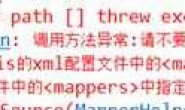|
如图,怎么根据前2列,得出递归的值呢? |
|
 40分 |
直接上代码:
package test;
import java.util.ArrayList;
import java.util.List;
public class Main {
public static int mul(Node n,int total){
if(n.lever==0){
return total;
}else{
return total*mul(n.parent,n.value);
}
}
public static void main(String[] args) {
Node n1 = new Node(3,Node.root);
Node n21 = new Node(2,n1);
Node n22 = new Node(3,n1);
Node n3 = new Node(5,n22);
System.out.println(mul(n1,1));
System.out.println(mul(n21,1));
System.out.println(mul(n22,1));
System.out.println(mul(n3,1));
}
public static class Node{
int lever;
int value;
List<Node> child = new ArrayList<Node>();
Node parent;
static final Node root = new Node(0, 1);
private Node(int lever, int value) {
super();
this.lever = lever;
this.value = value;
parent = null;
}
public Node( int value,Node parent) {
super();
this.lever = parent.lever+1;
this.value = value;
this.parent = parent;
parent.child.add(this);
}
}
}
结果: |
 |
思路
第n层的值an 第n-1层递归的值Yn-1 那么第n层递归值Yn = an * Yn-1 其实感觉这个应该是排列组合的知识,用不着递归,直接遍历“层级对应的值”就可以了 层级对应的值可以存Map<Integer,Integer> map中,循环的时候i=0;i<map.size;i++即可。 |
 |
看到不是特别明白,能否用for循环,然后变量去做呢? |
 |
构造节点代码应该看的懂吧。你前面说要递归的,我改了下递归或者for循环都可以的,结果是一样的。 package test;
import java.util.ArrayList;
import java.util.List;
public class Main {
public static int mul(Node n,int total){
//root节点返回
if(n==Node.root){
return total;
}else{
//非root节点,递归。
return total*mul(n.parent,n.value);
}
}
public static int mul(Node n){
int total = 1;
for(;;n=n.parent){
//root节点返回
if(n==null){
break;
}else{
total*=n.value;
}
}
return total;
}
public static void main(String[] args) {
Node n1 = new Node(3,Node.root);
Node n21 = new Node(2,n1);
Node n22 = new Node(3,n1);
Node n3 = new Node(5,n22);
System.out.println(mul(n1,1));
System.out.println(mul(n21,1));
System.out.println(mul(n22,1));
System.out.println(mul(n3,1));
System.out.println(mul(n1));
System.out.println(mul(n21));
System.out.println(mul(n22));
System.out.println(mul(n3));
}
public static class Node{
int lever;
int value;
List<Node> child = new ArrayList<Node>();
Node parent;
static final Node root = new Node(0, 1);
private Node(int lever, int value) {
super();
this.lever = lever;
this.value = value;
parent = null;
}
public Node( int value,Node parent) {
super();
this.lever = parent.lever+1;
this.value = value;
this.parent = parent;
parent.child.add(this);
}
}
}
|






